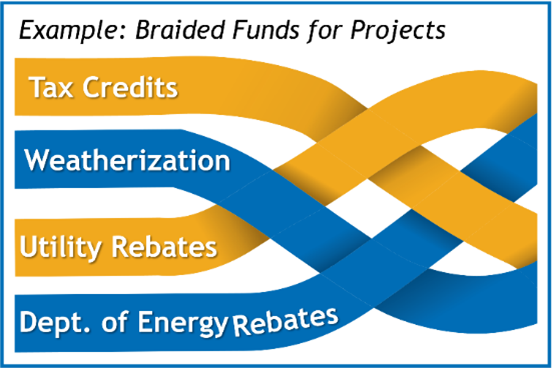Tapping Grants, Loans and Incentives to Cut Project Costs
Ensuring the Affordable Housing Market Benefits From Federal and Local Government Resources

By Ravi Malhotra
3 min read
Government programs typically do not consider or emphasize strategic and meaningful leveraging and collaboration with other programs, much less provide valuable guidance to do so. The lack of coordination within and between agencies and the expected politics yields an opportunity for the multifamily affordable housing industry to leverage the vast amounts of government funding coming its way, from the Bipartisan Infrastructure Law, Inflation Reduction Act and other programs, for energy efficiency, weatherization, solar, electrification, etc. Government agencies are struggling to spend their funds wisely and the multifamily market can help, much to its benefit.

Resources successfully making the case that, with the right design, programs focused on multifamily affordable housing are best poised to scale and expend these funds effectively, expeditiously and efficiently are available at https://bit.ly/ICAST_MF. These resources also detail how programs targeting this segment are best positioned to leverage funds from different programs, allowing the agencies to reach their goals quickly and in alignment with the Justice40 initiative.
The multifamily industry needs to push agencies to design programs focused on this market segment because it will increase affordability, health, comfort and safety for low-income tenants. It will also cut operating costs and increase net operating income and property values. Key guidance from ICAST and other industry leaders for these government agencies includes:
1. Aligning program requirements is key to successful and scalable leveraging practices. Income qualification, intake and reporting requirements must be the same across programs. Agencies can perhaps collaborate to issue a common Request for Proposals to select a single awardee/administrator, for multiple programs, that serve the multifamily market. Or, at minimum, require awardees to partner with each other. They can also require project applicants to provide a plan on how they will leverage other program funds.
2. Those in charge of designing programs must engage with implementers of existing successful programs, or else their program design could be in direct competition with the existing program. They need to understand that the multifamily market needs implementers who have expertise in not only affordable housing but also energy finance, clean energy and workforce development. Since almost none of the government incentives are paid upfront, the implementer needs to have the ability to provide low-cost bridge financing to execute the project and collect the incentives.
3. More guidance, outreach and education—by program administrators and their implementers—are crucial.
Agencies should offer training and technical assistance, hold integrated grantee meetings and conferences, and develop and continue to update best practices for leveraging with the help of subject matter experts.
Additional Resource: